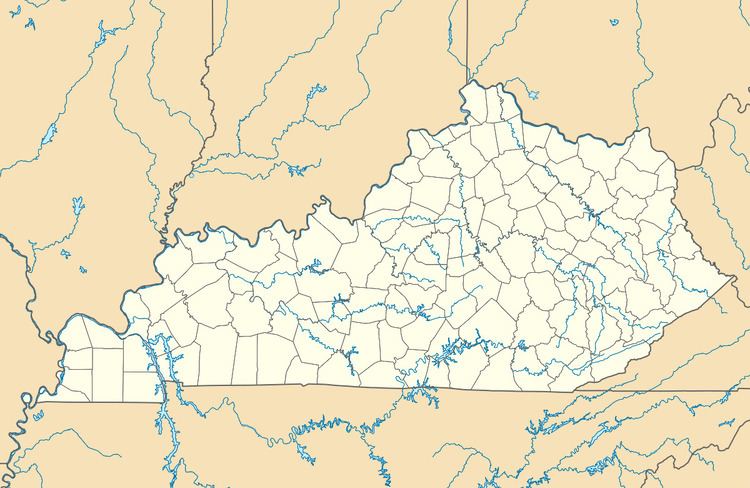Country United States Commission date 1926 | Nameplate capacity 80 MW Units operational 8 | |
 | ||
Lg e ohio falls station
Ohio Falls Station is a hydroelectric power station owned by Louisville Gas & Electric (LG&E) and Kentucky Utilities (KU) which is located three miles west of Downtown Louisville, Kentucky. The generating station is located on Shippingport Island at the sight of the McApline Dam and locks along the Ohio River in Kentucky. The plant was built in 1923 by Byllesby Engineering and Management Corporation and the U.S. Army Corps of Engineers. The plant featured eight 10.4 MW units operating at roughly 13,500 hp per unit. Each unit was composed of Allis Chamber turbines and General Electric generators. The plant is located inside the Ohio Natural Wildlife Conservation Area and is considered a large impoundment hydro power plant. The station was built after a canal and dam within the Ohio river in an attempt to allow boats to navigate the 8 ft vertical drop among the falls that spanned 2 miles wide. Production of the canal and dam began in 1825. It was not until a repair on the dam was needed that Louisville engineers had the idea of building a hydroelectric station to harvest the power of the falls.
Contents
- Lg e ohio falls station
- History
- Generating electricity
- Improvements
- Electrical production
- Costs of production
- Comparing costs
- References
History
At first the U.S. Army Corps Engineers had deemed the falls an unsuitable site for a hydroelectric facility due to the inconsistent water levels of the river. The rivers highs kept the water falling from the rapids and the rivers lows did not provide flows strong enough to move a turbine. In 1912 a Major of the Army corps revisited the research done and determined a hydro power plant was possible due to new technological developments. At its inception the Ohio Falls Plant generated enough energy to power the city of Louisville, but as the city grew the source became insufficient. The dam is ran by the U.S. Army Corps Engineers who operate the navigation of the flow of the dam into the river. The U.S. Army Corps Engineers place priority in environmental conservation and controlling the water levels within the river. This limits the ability for the plant to optimize electricity production
Generating electricity
The water flowing through the dam enters the facility through the trash bars, catching any large debris, and then spinning a shaft connected to the blades which then spin the turbine, rotating the generator and producing electricity. The eight generators produce roughly 80 MW of electricity.
Improvements
LG&E and KU are currently investing in the plant to increase its production without damaging the ecosystem. LG&E and KU have implemented a three phase reconstruction plan. Phase 1 Was completed in 2002 and involved updating equipment technology to have automated and remote operation capabilities. Phase 2 was completed in 2004-05 and focused on regulating waste that enters the dam and could damage the machines. This included adding "trash-rack cleaning machine, sluice gate and trash racks" to filter out trash that flows through the river into the dam. Phase 3 is scheduled to be finished in 2017 and includes a final restoration of the units including, "new runner, rewinding the generator, stator restack, converting rotating exciter to static excitation and refurbishment of wicket gates." As part of the remodeling of the plant a computer model was created to determine the optimal size and shape of the turbines to ensure maximum productivity from the plant. This will allow the plant to operate at a wider distribution of water levels and increase the electric production to 101 MW.
Electrical production
The overall production capacity of the Ohio Falls plant is 80 megawatts. The average electricity usage for an American is 3,000 kilowatts per year, meaning the plant is capable of providing power for 233,600 residents. (80,000,000/1,000=80,000 x 24 hours/ day x 365 days/year=700,800,000 kilowatt-hours/3,000=233,600 residents).
Costs of production
The LCOE (levelized cost of energy) for hydropower is 83.5/MWh. If the Ohio Falls Plant was to be rebuilt again in 2020 it would cost $58,516,800 to build and operate over its lifetime.
Comparing costs
All costs are $2,013/MWh for plants being generated in 2020.
